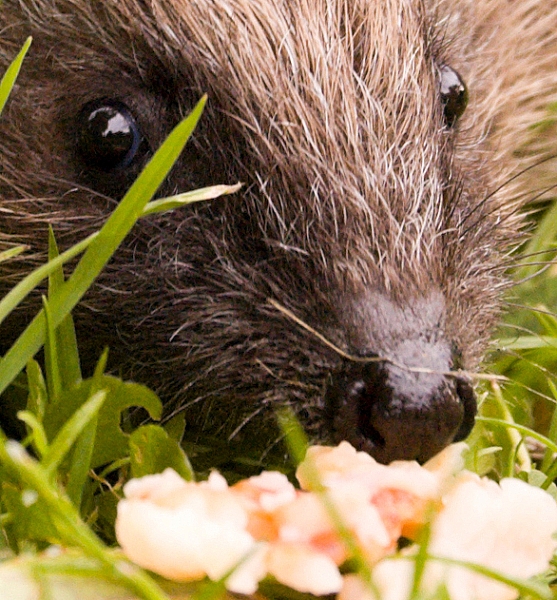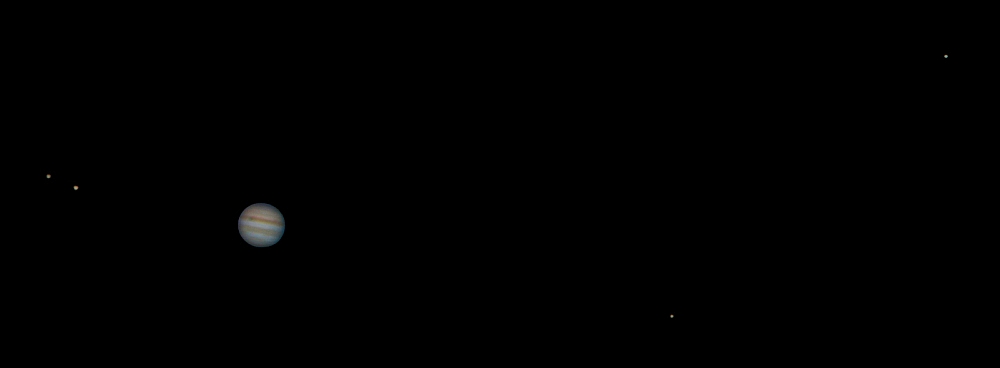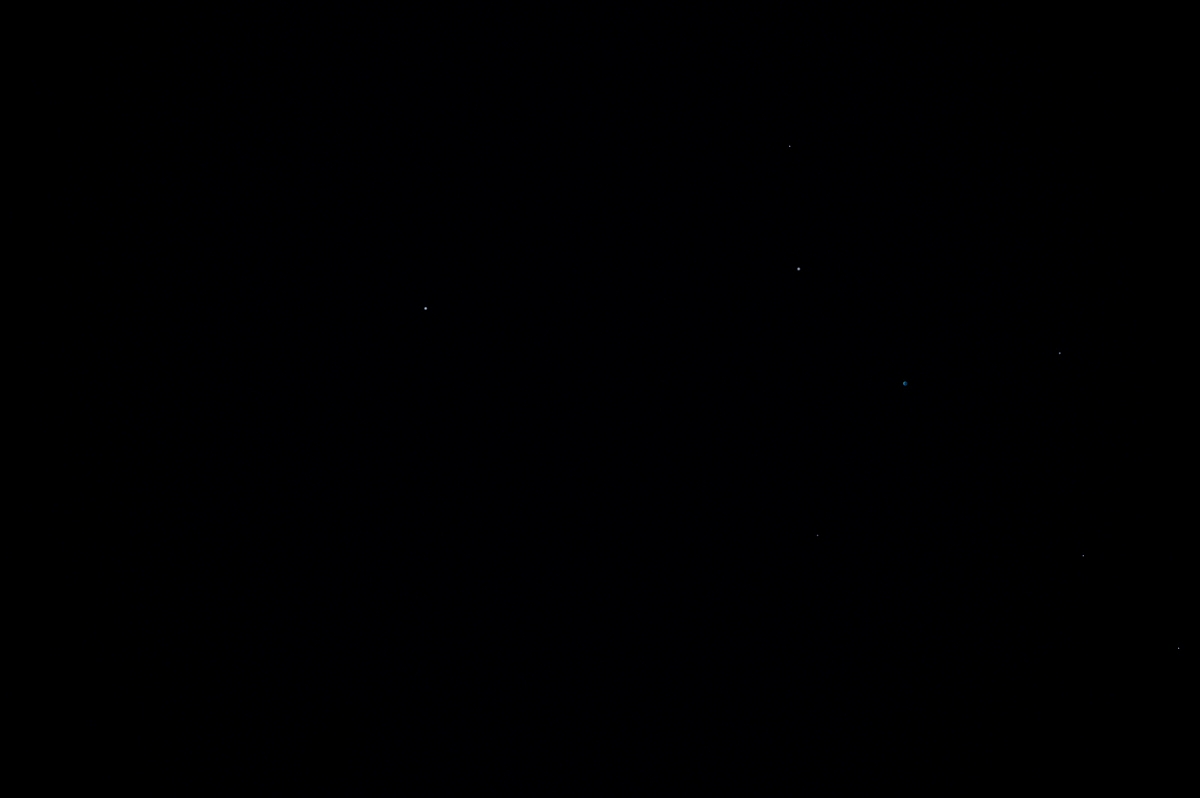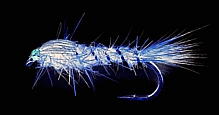Archive for 2008
Eyes
Just testing UMapper
I've been playing around with UMapper, another nice map-making service. It says that it's "the first universal web-based map-layering engine", and they claim that it's good for Blogger and WordPress, amongst other blog services. You get the choice of Google Maps, Microsoft Virtual Earth or OpenStreet. I've had a go with the Wordpress plug-in version and made this without having to leave the WP admin area:
[umap id="1747" size="l" alignment="center"]
STOP PRESS! July 23rd 2008: Version 1.2.0 of the UMapper plugin was released, but it broke the blog when I updated to it, preventing me accessing any of the blog admin. I had to delete the plugin files and reinstall version 1.1.8.
STOP PRESS! July 25th 2008: Version 1.3.2 of the UMapper plugin was released, but it broke the blog when I updated to it, preventing me accessing any of the blog admin, and giving the following error-messgae: Fatal error: Cannot redeclare media_admin_css() (previously declared in /home/beardedg/public_html/wp-content/plugins/umapper/Umapper.php:140) in /home/beardedg/public_html/wp-admin/includes/media.php on line 198. I had to delete the plugin files and reinstall version 1.1.8 again.
STOP PRESS! July 27th 2008: Version 1.3.6 of the UMapper plugin was released, but it broke the blog when I updated to it, preventing me accessing any of the blog admin, and giving the following error-messgae: Fatal error: Cannot redeclare media_admin_css() (previously declared in /home/beardedg/public_html/wp-content/plugins/umapper/Umapper.php:140) in /home/beardedg/public_html/wp-admin/includes/media.php on line 198. I had to delete the plugin files and reinstall version 1.1.8 yet again.
STOP PRESS! July 28th 2008: Version 1.3.71 of the UMapper plugin was released, and it installs but doesn't work right yet (nothing happens when I click on the "Add UMapper Map" icon in the write post admin screen). Many thanks to Vic for the info about the update.
STOP PRESS! July 28th 2008: Cleared the cache and rebooted, all's working now. Happiness is restored. ![]()
Observing Report 30 June/1 July 2008 (The bonus-ball)
Well, after many weeks of varied weather and cloudy nights, on Sunday evening the skies cleared and I went out for a quick spotting session to help plan what to view on Monday night, which was also forecast to be clear. I'm still not ready to start imaging DSOs yet, so I figured that some widefield observing and some Jupiter imaging would be reasonable objectives. Jupiter's the brightest object in the southern sky at the moment, but it only reaches 12° elevation when it passes through my "window of opportunity", so in order to view it from my garden I would have to finish decimating the overgrown privet hedge that blocks the prospect southwards. That was the job for Monday.
Monday evening arrived and things didn't look promising - plenty of high cloud was obscuring the sky, and I figured that if I couldn't get a consistent view of Polaris, I would have to abandon the session, as the scope's alignment routine depends on getting the mount aligned with the pole.
I was just about to give up when the clouds parted and the stars shone forth. I had about an hour before Jupiter was due to swing into view, so I took my time with the mount-alignment, ensuring that everything was set up as near to perfect as possible, then it was time to see the sights.
First up was a view of M8 (Messier 8, the Lagoon Nebula) in Sagittarius, before it went out of sight. Pretty impressive, I reckon. I could have tried to image it, but it escaped behind the house next door.
Next I decided that it was time to get the scope pointing at Jupiter, which was due to hit my field of view within the next 30 minutes. That set, I went in for a cuppa.
When I came back out, Jupiter was dead-centre in the eyepiece with some of the moons lined up like a string of pearls either side of the planet. Io was just grazing the edge of the disc, and later there was the shadow of Io on the face of the parent planet. Nice.
Soon the webcam was in place and it was taking 100-second .avi movies of the planet. I had zoomed right in with the 8mm setting on the eyepiece, this gave a magnification of x125, and I was projecting the image onto the webcam chip about 70mm away. This gave a large image but because the planet was so low, it appeared just above the rooftops, and the heat from them was causing a lot of shimmering. Short exposures would be needed, so I settled for 15 fps. The .avis were processed later, and the best image produced from them so far is this:
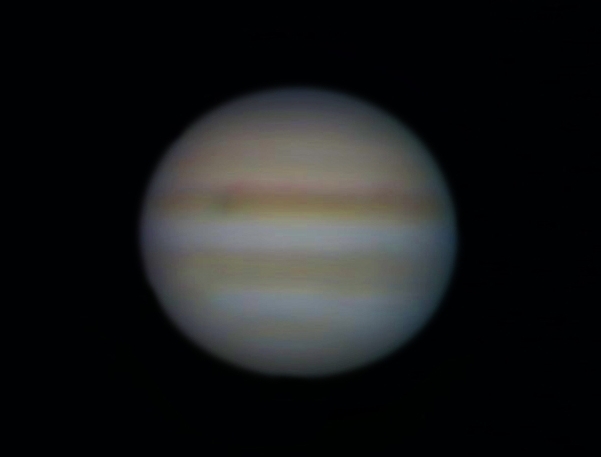
Jupiter, with a hint of Great Red Spot (lower-left) and the shadow of Io (upper-left)
After that, I put away the webcam and attached the Nikon D50 instead, still using the eyepiece-projection method, and rattled off a selection of wider-field shots of the planet with some of its moons. I had to use longer exposures to get the moons, and shorter ones to get Jupiter, so the images produced are composites. The best one of these is:
Left to right: Europa, Ganymede, Jupiter, Callisto.
Io is in transit across the face of Jupiter, but it's lost in the background.
The object in the top-right corner is a star.
After a couple of hours of this, Jupiter passed out of sight so it was time to look at something else before the skies became too light. I had a look at Winstars and figured that Neptune, a planet reluctant to appear before us, might be in shot after a short wait. I slewed the scope to point at it but it was behind some trees. No matter, it was time for another brew anyway.
Neptune's not visible to the naked eye, so I had a look for it through my trusty binoculars. I found the row of three stars that currently acts as a marker for locating the planet, and, by using averted vision, could just make out a very faint dot of light where Neptune should be. Encouraged by this, I waited until the area was in sight, and took a short series of zoomed-in long exposures of the seemingly-empty area of blackness, hoping that the results would be in focus (none of the marker stars were bright enough to show up in the viewfinder, it was hit-and-hope stuff). I had to stop soon, though, as the sky was just too light, and the morning dew was beginning to form on the optics. The session was over, and I was convinced that I had failed to capitalise on this unplanned opportunity.
I packed away and headed inside to warm up. While swilling down a hot cuppa, I had a quick look at the pics that might have included Neptune, and there it was, a small blue fuzzy ball! It needed a lot of processing to get rid of the noise and other defects caused by the optics and the atmospheric conditions, but I ended up with this:
Neptune (the tiny blue dot to the right of centre), and 2 of the 3 marker-stars.
Next time out, I'll try for a better picture. It'll be easier now that I know where to look and what camera settings to use.
Bandit at two o’clock
The afternoon peace was shattered by the distinctive sound of a Chinook circling above the village.
By comparison, the giant mutant bee in hot pursuit was the epitome of stealth, swooping down from the cloud-cover, closing in fast on its prey.
We'll probably never know the outcome of this encounter, but bearing in mind the track-record of the mechanical monster, my money's on the insect.
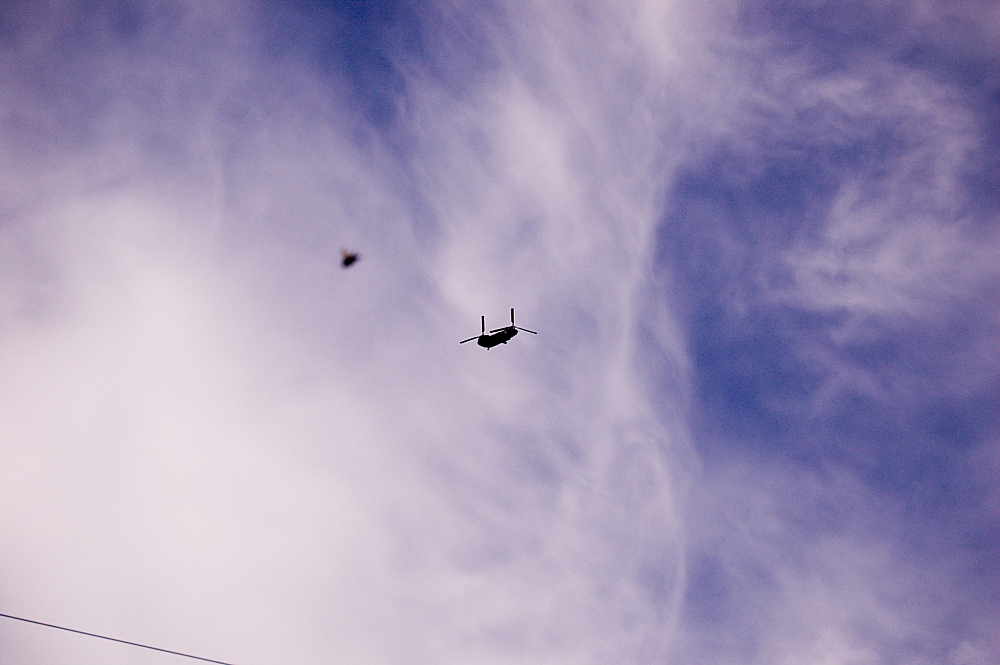
OK, one last time. These are small... but the ones out there are far away. Small... far away... ah forget it!
25 years ago today…
... only two really important things happened...
The Black Adder, Episode 3 of Series 1 (The Archbishop), was first broadcast, and;
A Welshman, Luke Talion, was born:
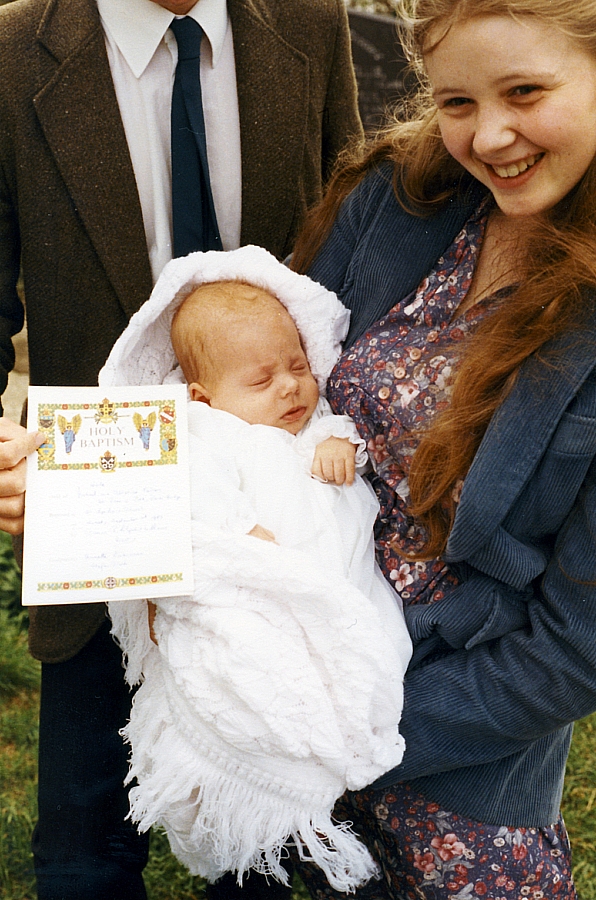
Who would have guessed that he would grow up into this handsome fella?:
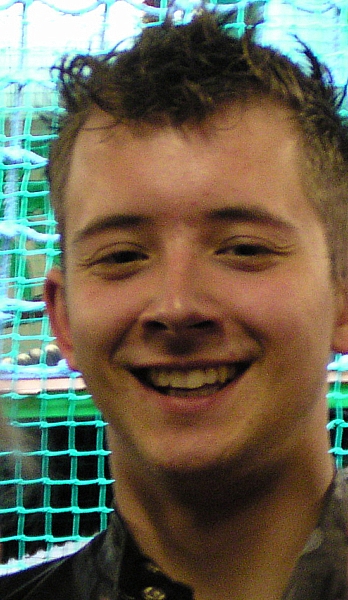
The whole family would like to wish you a happy 25th birthday, Luke.
Your sisters send their love and can't wait for you to get in touch again.
Wherever you are and whatever you're doing, we'll always be here for you.
You know where we are if you need us.
Love from Mum, Stef, Ella and Anna.
Resistance was futile
- 1 room.
- 1 front and rear door.
- 4 air vents.
- No see UM mesh.
- Attached ground sheet.
- Hydrostatic head 2000mm (That's the fly and the groundsheet).
- Taped seams.
- Tension adjusters.
- Quick clips.
- Weight 5.8kg.
- Size of tent overall (L)460, (W)160, (H)120cm (I've corrected this info).
- Size of each room 220 x 150cm.
- Size of living space 220 x 150cm.
- Height at highest point 120cm.
- Packed size (H)20, (W)20, (D)56cm.
- Both porches are big enough to cook in (if you're feeling brave - the fabric's not fire-retardant), I reckon the Tilley Titan twin-burner with grill will fit in there no problem.
- The air-vents are adjustable, held open by the semi-rigid spar or closed with the velcro tabs. A nice touch here is the gusset inside the vent, designed to prevent wind-blown rain from working its way up the fly and through the mesh onto the inner. This is a feature that the door-vent on my Force Ten Spindrift would benefit from.
- All pole-sleeves are continuous.
- It's a "pitch inner first" tent.
- The groundsheet, which looks to be durable, is bath-tub style and it's properly reinforced and taped at the stress-points.
- There's an all-round valance to which peg-out loops are attached, but there are also tabs between the fly and the valance, so the fly could be pegged out with the valance tucked away if not required.
- There are 4 long fixed storage pockets in the inner, and a basic removable gear-loft too.
- They say it's a 2-person tent, but it would take 3 adults + gear at a push.
- There are many tie-in points to fix the underside of the fly to the poles to reduce flapping.
- There's a spares-pack containing: 1 guyline with a runner, 1 spare peg, 2 spare pole-sections, 2 pole-repair sleeves.
It's a biggie. I've included a 5'3" stroppy teenager to give some idea of scale.
It's broad across the beam.
Looking up one of the vents.
The valance pegged out. Note the extra tabs where the valances meets the fly, they're for tying back the valances when you don't need to deploy them.
Quick-clip fly attachment with tensioner.
Loadsa room.
Looks good, eh? It's a nice colourscheme, no?
